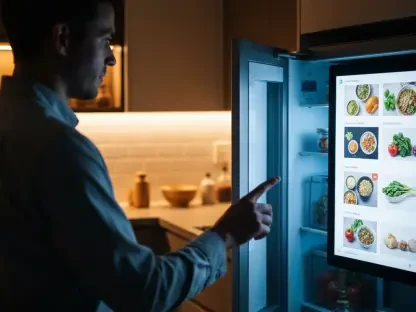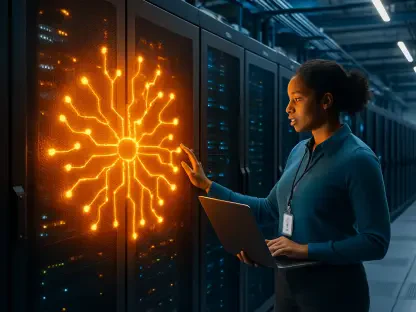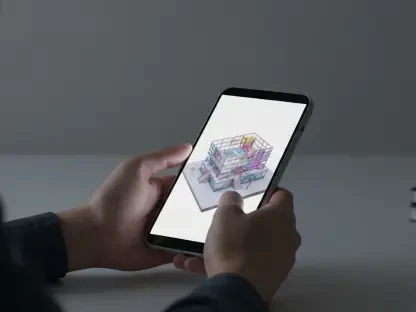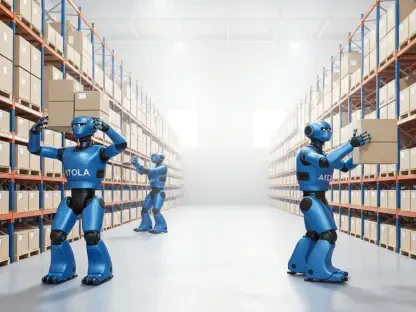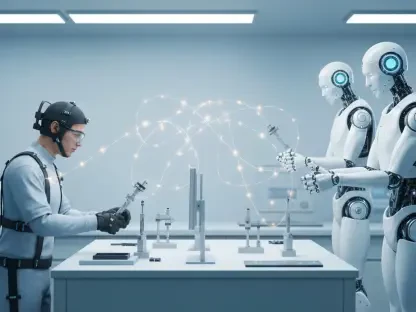What happens when a robot can lift a heavy water jug or shift a cumbersome box with the same ease as a human, learning the trick from just one example, and how does this breakthrough signal a new era for automation? This isn’t a distant dream but a reality unfolding in cutting-edge labs today. At the Toyota Research Institute in Massachusetts, a robot named Punyo is redefining what machines can achieve, tackling tasks that once seemed impossible for automation. This breakthrough sparks curiosity about how soon robots might become indispensable helpers in homes and industries, handling the heavy lifting with uncanny skill.
The Weight of Innovation in Robotics
The significance of this development cannot be overstated. Robots have long excelled in precision tasks like assembling electronics or navigating rough terrain, but handling bulky, awkward objects has remained a stubborn challenge. Punyo’s ability to master such tasks after minimal training signals a turning point for automation, promising to transform sectors like warehousing, healthcare, and even domestic life. This isn’t just about lifting objects—it’s about bridging the gap between rigid machines and the fluid adaptability of human movement, a leap that could redefine how society integrates robotics into daily routines.
Unpacking the Struggle with Bulky Objects
Robots often falter when faced with large, unwieldy items like cardboard boxes or oversized containers. Unlike humans, who instinctively combine hand precision with whole-body coordination, most machines lack the dynamic balance and real-time adaptability needed for such tasks. This limitation has hindered their usefulness in environments where objects vary in shape, weight, and texture. The challenge lies in creating systems that can adjust on the fly, a skill essential for robots to operate effectively in unpredictable, human-centric spaces like homes or busy warehouses.
Punyo’s Game-Changing Design and Skills
Meet Punyo, a humanoid upper-body robot engineered to overcome these hurdles with remarkable finesse. Developed by researchers at the Toyota Research Institute, this machine boasts soft, pressure-sensing skin and flexible joints, allowing it to cushion impacts and conform to an object’s contours. Whether it’s hoisting a water jug onto its shoulder or pivoting to lift a bulky box, Punyo’s design—termed “compliance”—enables a level of adaptability unseen in traditional rigid robots, achieving a staggering 206% higher success rate in tests.
What sets this robot apart further is its ability to operate without visual cues. Relying solely on internal sensors for touch and position feedback, Punyo navigates contact-rich tasks through proprioceptive data alone. This blind operation mirrors human intuition in handling objects, showcasing a blend of hardware innovation and sensory intelligence that could pave the way for safer, more reliable robotic interactions in cluttered or dimly lit settings.
Behind the Scenes: Research and Expert Perspectives
The brains behind Punyo attribute its success to a marriage of compliant hardware and smart learning strategies. A researcher from the team noted, “Softness and flexibility let robots engage with the world in a way that’s both safe and effective, much like humans.” Published findings in a leading journal (DOI: 10.1126/scirobotics.ads6790) reveal how this approach outstrips older, stiff designs by wide margins, offering concrete evidence of its impact.
Equally impressive is the training method fueling Punyo’s capabilities. Through example-guided reinforcement learning, the robot absorbs a complex task from just one virtual demonstration, refining it via trial and error. Experts in the field have hailed this efficiency as a potential game-changer, suggesting that such streamlined learning could accelerate the deployment of robots across diverse applications without the need for exhaustive programming.
Transforming Everyday Life with Rapid Learning
Picture a robot like Punyo stepping into practical roles with minimal setup. Its one-lesson learning model means a user can guide it through a task once in simulation, after which the machine hones the skill independently. This simplicity opens doors to non-experts teaching robots new jobs, from shifting furniture in a living room to stacking heavy crates in a distribution center, breaking down barriers to adoption.
The potential extends to critical areas like healthcare, where such robots could assist staff by supporting patients with mobility issues. In industrial settings, they might optimize workflows by managing oversized loads with ease. This adaptability hints at a future where robotic assistants are not just tools but intuitive partners, capable of learning and adjusting to a wide array of human needs with little oversight.
Looking Ahead to a New Era of Robotics
Reflecting on Punyo’s journey, it becomes clear that this milestone marks a shift in how robots are perceived and utilized. The fusion of compliant design and efficient learning has shattered long-standing barriers, proving that machines can handle bulky objects with human-like dexterity after minimal training. The implications ripple across industries, hinting at safer, more capable automation in everyday scenarios.
Moving forward, the focus should turn to scaling these innovations—integrating visual feedback, expanding task ranges, and ensuring seamless human-robot collaboration. Researchers and industries alike must prioritize safety protocols, especially in sensitive environments like hospitals. As technology advances from 2025 onward, the challenge lies in making such robots accessible and customizable, ensuring they evolve into true allies in tackling the physical demands of modern life.




